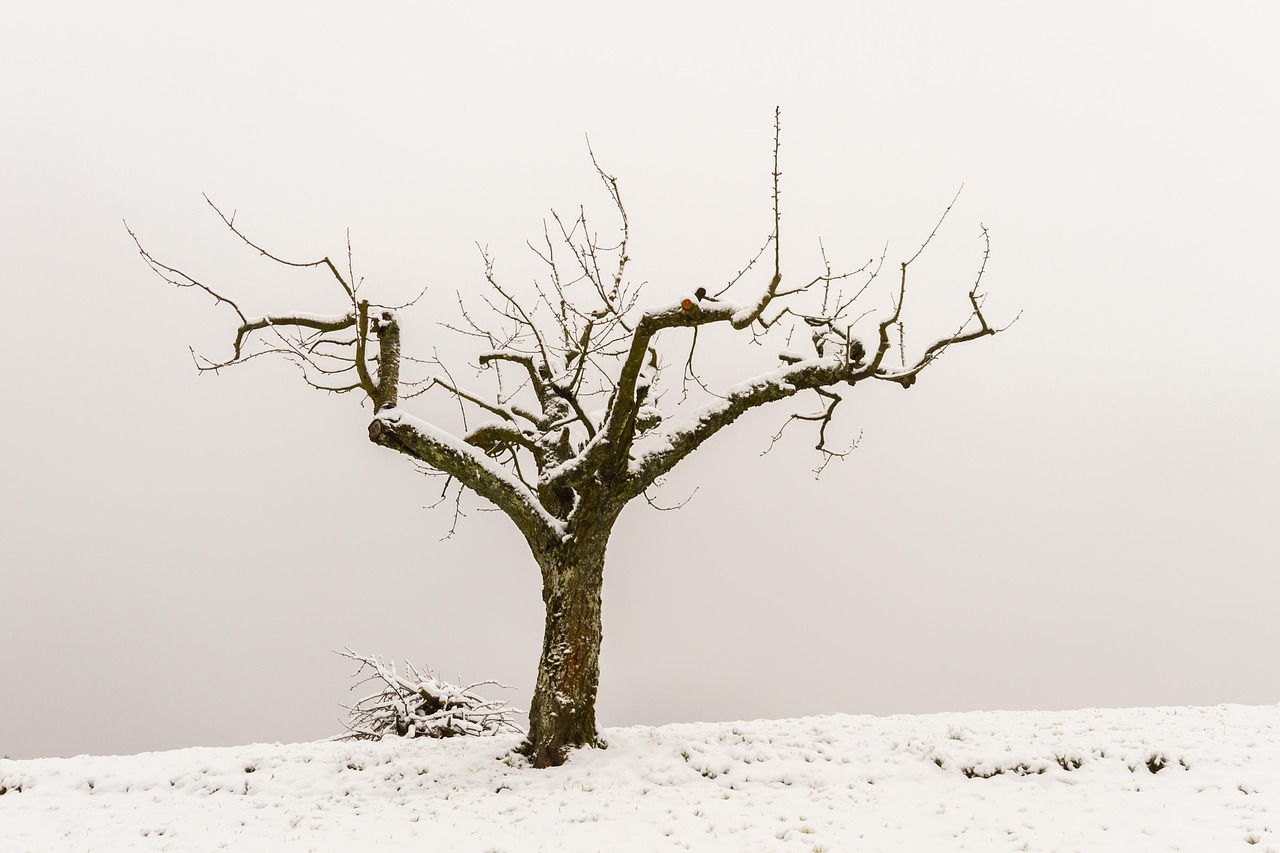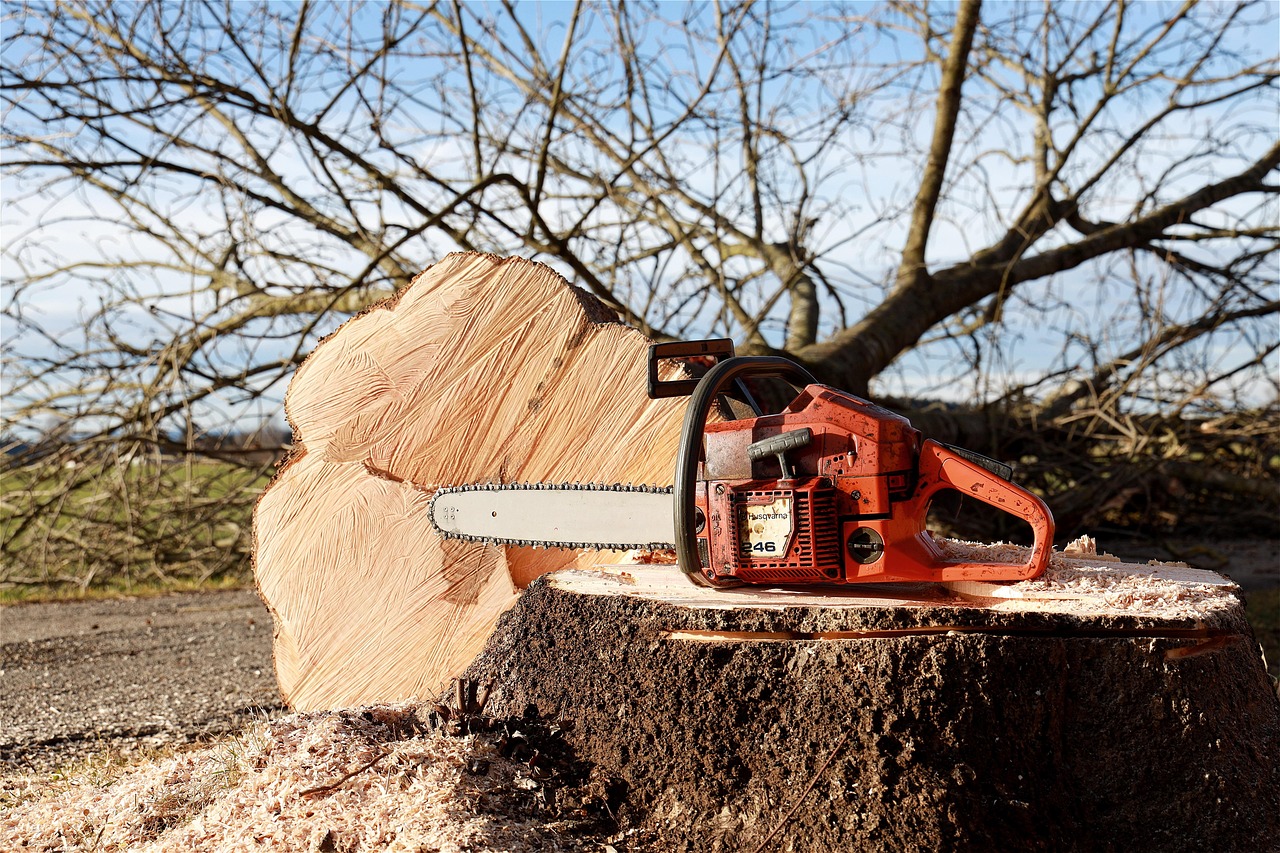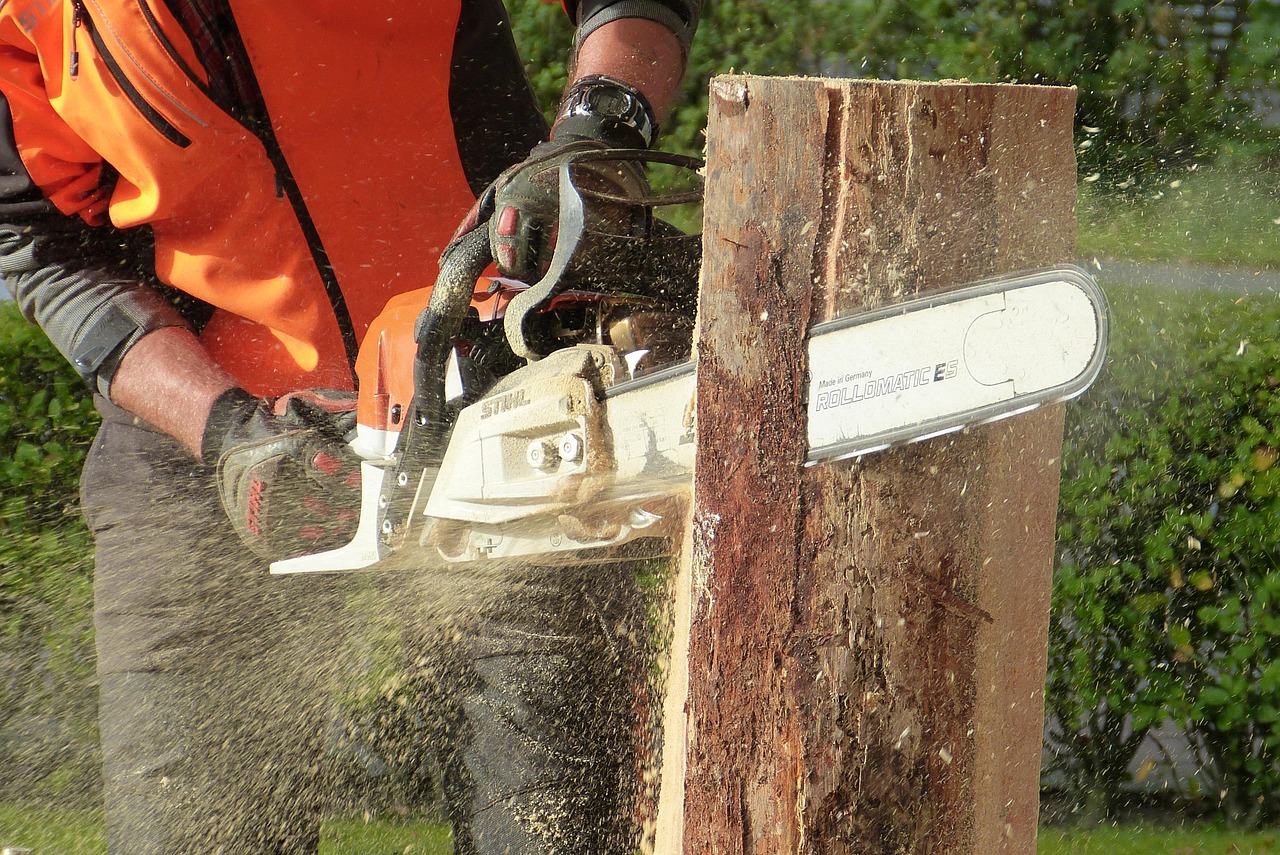Large tree pruning in difficult and high areas requires specialized techniques and equipment. Essential methods include climbing with harnesses, using aerial lifts, and employing proper cutting tools to ensure safety and effectiveness.
Pruning large trees, especially in hard-to-reach places, is a crucial task. It promotes healthy growth, prevents potential hazards, and enhances the overall aesthetics of your landscape. However, managing these trees can be challenging due to their height and location. Proper techniques play a vital role in ensuring the job is done safely and effectively.

Understanding the basics of tree biology is important before diving into pruning methods. Trees have a natural growth pattern, and improper pruning can lead to damage or even death. Pruning should be timed correctly, typically during the dormant season in late winter or early spring, to minimize stress on the tree.
Techniques for Pruning Large Trees
When it comes to pruning large trees in difficult and high areas, several techniques are commonly used. Each method has its own set of advantages and precautions. Here are some of the most effective techniques:
- Climbing with Harnesses: Skilled arborists often climb trees using safety harnesses and ropes. This method allows for precise cuts at various heights.
- Aerial Lifts: For very tall trees, aerial lifts or cherry pickers are utilized. These machines provide a stable platform for workers to access the upper branches safely.
- Rigging Techniques: When branches are too large or heavy, rigging techniques help lower them safely to the ground without causing damage.
- Pole Saws: For lower branches out of reach, pole saws can be effective. They allow for cutting from the ground with extended reach.
Each of these techniques requires specific skills and safety measures. Arborists must be trained to handle equipment properly and understand tree health. Moreover, adhering to safety protocols ensures that both the workers and surrounding property remain unharmed during the pruning process.

The choice of tools is equally important in pruning large trees. Using the right tools not only makes the job easier but also helps maintain the health of the tree. Below is a table highlighting common tools used in large tree pruning along with their purposes:
| Tool | Purpose |
|---|---|
| Hand Pruners | For small branches and delicate cuts |
| Loppers | For cutting larger branches up to 2 inches thick |
| Saw | For branches thicker than 2 inches |
| Chainsaw | For large limbs and tree removals |
| Rope and Harness | For safe climbing and maneuvering in trees |
Safety should always be a top priority when pruning large trees. Arborists should wear proper personal protective equipment (PPE) such as helmets, gloves, goggles, and sturdy footwear to protect themselves from falling branches and other hazards.
Additionally, it is essential to assess the tree’s condition before starting any pruning work. Signs of disease or damage may require different approaches or even professional assistance. An experienced arborist can evaluate whether pruning is necessary or if other interventions are needed to preserve the tree’s health.

Regular maintenance of your trees is important. Pruning not only shapes the trees but also removes dead or diseased branches that could pose risks during storms or high winds. Keeping trees well-maintained enhances their longevity and beauty.
In summary, large tree pruning in difficult and high areas involves a combination of specialized techniques and equipment. Understanding tree biology, using appropriate tools, and prioritizing safety are all critical components of effective pruning practices. As we delve deeper into this topic, we will explore specific challenges faced during pruning and advanced techniques for managing those challenges.
Common Challenges in Pruning Large Trees
Pruning large trees in difficult and high areas comes with its own set of challenges. Understanding these challenges allows arborists and homeowners to prepare and execute their pruning tasks more effectively. Below are some of the most common challenges faced during this process:

- Height and Accessibility: Reaching the upper branches of tall trees can be difficult. This often requires specialized equipment and skills.
- Branch Weight: Larger branches can pose a danger if not handled correctly. Proper rigging techniques are essential to lower heavy limbs safely.
- Tree Health: A tree’s health can affect how and when it should be pruned. Diseased or damaged trees may require different pruning strategies.
- Weather Conditions: High winds or rain can make pruning dangerous. Arborists must assess weather conditions before beginning work.
Each of these challenges requires careful planning and consideration. Addressing them properly ensures that the pruning is both safe and effective.
Assessing Tree Health Before Pruning
Before initiating any pruning work, it is vital to assess the health of the tree. Several indicators can help determine whether a tree is healthy enough for pruning:
- Leaf Color and Density: Healthy trees have vibrant, green leaves. Yellowing or sparse foliage may indicate stress.
- Branch Condition: Look for dead or decaying branches. These should be prioritized for removal.
- Trunk Integrity: Cracks or peeling bark can signal deeper issues that may require professional evaluation.
- Pests or Diseases: Signs of infestation or disease, such as holes in leaves or abnormal growths, should be addressed before pruning.
If any of these signs are present, consulting with a certified arborist may be necessary. They can provide a thorough assessment and recommend appropriate actions for tree care.
Safety Protocols for High Tree Pruning
Safety is paramount when pruning large trees, especially in high areas. Following established safety protocols helps prevent accidents. Here are key safety measures to consider:
- Use Proper Equipment: Ensure that all tools are in good condition and appropriate for the job.
- Wear PPE: Personal protective equipment, including helmets, gloves, goggles, and harnesses, should always be worn.
- Establish a Safety Zone: Clear the area beneath the tree of people and obstacles to create a safe working environment.
- Have a First Aid Kit Ready: Always have first aid supplies on hand in case of injuries.
By adhering to these safety protocols, arborists can minimize risks associated with pruning large trees at height.
Advanced Techniques for Difficult Areas
In addition to basic pruning techniques, advanced methods can enhance efficiency and safety during tree maintenance. Here are some advanced techniques that arborists may employ:
- Climbing Techniques: Advanced climbing methods such as SRT (Single Rope Technique) allow arborists to ascend trees more efficiently while minimizing damage to the tree.
- Chainsaw Safety: Knowing how to use chainsaws safely at height is crucial. Arborists should be trained in proper chainsaw handling techniques.
- Tree Removal Techniques: In cases where a tree is too damaged to save, knowing how to safely remove it without impacting surrounding structures is essential.
Training in these advanced techniques can greatly benefit those who work with large trees in challenging environments. It ensures that they are equipped to handle unexpected situations effectively.
The Role of Technology in Tree Pruning
The integration of technology into tree maintenance has transformed many aspects of the pruning process. Here are some technological advancements that have made pruning easier and safer:
- Drones: Drones can be used for aerial surveys of trees, providing a bird’s-eye view that helps assess tree health and structure.
- Laser Cutting Tools: Modern tools allow for cleaner cuts, reducing the risk of disease transmission through open wounds.
- Tree Management Software: Software applications help track tree health, schedule maintenance, and manage pruning tasks efficiently.
The use of technology not only enhances safety but also improves precision in tree care practices. As technology continues to evolve, it will further influence how arborists approach large tree pruning in difficult areas.
Environmental Considerations
Caring for large trees goes beyond aesthetics and safety; it also involves understanding environmental impacts. Pruning should be done with an awareness of local wildlife and ecosystems. Here are some considerations:
- Nesting Season: Avoid pruning during bird nesting seasons to protect local wildlife.
- Ecosystem Balance: Understand the role of trees in their ecosystem. Removing too many branches can disrupt habitats for various species.
- Sustainable Practices: Implement sustainable practices such as composting pruned materials instead of discarding them.
By being mindful of environmental considerations, arborists can contribute positively to their local ecosystems while maintaining healthy trees.
Pruning Techniques for Different Tree Species
Different tree species have unique characteristics that influence how they should be pruned. Understanding these differences is crucial for effective tree management, especially in challenging environments. Here are some common tree species and their specific pruning needs:
Deciduous Trees
Deciduous trees, such as oaks and maples, lose their leaves in the fall. Pruning these trees is best done in late winter or early spring. This timing minimizes stress and encourages healthy growth. Key practices for pruning deciduous trees include:
- Thinning: Remove selected branches to improve air circulation and light penetration.
- Heading Cuts: Make cuts to reduce the height of the tree while promoting new growth.
- Removing Deadwood: Regularly inspect and remove any dead or diseased branches to maintain tree health.
Coniferous Trees
Coniferous trees, such as pines and spruces, retain their needles year-round. Pruning these trees often requires different techniques. It is generally advisable to prune conifers in late spring or early summer. Here are some recommended practices:
- Selective Pruning: Focus on removing lower branches to allow light to reach the ground.
- Pinching: For young conifers, pinching back new growth can help maintain a desired shape.
- Shearing: Lightly shear the outer foliage to encourage denser growth.
Fruit Trees
Pruning fruit trees such as apple and cherry enhances fruit production and overall tree health. The best time to prune fruit trees is during their dormant season, typically in late winter. Important techniques include:
- Crown Management: Shape the crown to allow sunlight to penetrate through the branches, which encourages fruit development.
- Thinning Out: Remove excess branches to reduce competition among fruit-bearing limbs.
- Summer Pruning: Performing light pruning during the summer can help control tree size and improve fruit quality.
Using Proper Cutting Techniques
The way in which branches are cut plays a significant role in the health and recovery of the tree after pruning. Here are some essential cutting techniques to ensure effective pruning:
The Three-Cut Method
This method is particularly useful for removing large branches and minimizing damage to the tree. It involves three steps:
- The Undercut: Make an initial cut on the underside of the branch about one-third of the way through. This prevents the bark from tearing.
- The Top Cut: Make a second cut on the top side of the branch slightly farther out from the first cut. This cut will sever the branch completely.
- The Final Cut: Remove the remaining stub by cutting just outside the branch collar, which is the swollen area where the branch meets the trunk.
Proper Angle Cuts
Cuts should be made at an angle to facilitate water drainage and prevent moisture accumulation, which can lead to rot. Here are guidelines for angle cuts:
- 45-Degree Angle: For most branches, a 45-degree angle is ideal for quick healing.
- Straight Cuts: For small cuts, a straight cut may be appropriate. However, always follow rules for maintaining the branch collar.
Tools for Effective Pruning
The right tools are essential for successful large tree pruning. Using appropriate equipment not only makes the job easier but also helps maintain tree health. Here are some commonly used tools:
| Tool | Description | Best Use |
|---|---|---|
| Hand Pruners | Small scissors-like tools for precise cuts. | For light pruning and small branches. |
| Loppers | Larger cutting tools with long handles for added leverage. | For branches thicker than ¾ inch. |
| Saw | A hand or pole saw for larger branches. | For cutting branches over 2 inches thick. |
| Chainsaw | A power tool for heavy-duty cuts and removals. | For substantial limbs or entire tree removals. |
| Pole Saw | A saw attached to a long pole for high branches. | For reaching elevated or hard-to-access areas. |
Maintaining tools is equally important. Regular sharpening and cleaning ensure that tools function correctly and make clean cuts that will help reduce stress on the tree.
Post-Pruning Care
After pruning, it’s crucial to provide proper care to support the tree’s recovery. Here are some post-pruning care tips:
- Watering: Ensure adequate watering, especially during dry spells, to promote healing.
- Pest Monitoring: Keep an eye out for signs of pests or diseases following pruning.
- Nutrient Supplementation: Consider applying a balanced fertilizer if necessary to support new growth.
Caring for trees after pruning is vital to ensure they thrive and recover quickly from any stress caused by cutting.
Long-Term Tree Management
In addition to post-pruning care, long-term management of large trees is essential for maintaining their health and structural integrity. This involves regular assessments, ongoing care, and preventive measures to ensure that the trees remain vibrant and safe. Here are some key considerations for long-term tree management:
- Regular Inspections: Schedule periodic inspections to monitor tree health. Look for signs of disease, pest infestations, and structural issues. Early detection can prevent more significant problems.
- Pruning Schedule: Establish a routine pruning schedule based on the species and growth patterns of your trees. Regular maintenance helps prevent overgrowth and reduces the need for drastic cuts in the future.
- Soil Health: Monitor soil conditions and quality. Conduct soil tests to determine nutrient levels and pH. Healthy soil promotes strong root systems and overall tree vitality.
- Mulching: Apply mulch around the base of trees to retain moisture, suppress weeds, and improve soil quality. Organic mulch can decompose over time, enriching the soil as it breaks down.
Implementing these long-term management strategies will help ensure the longevity and health of your trees, ultimately enhancing the beauty of your landscape.
Understanding Local Regulations
Before undertaking any pruning or tree maintenance work, it is crucial to be aware of local regulations regarding tree care. Many municipalities have rules governing tree pruning, especially for public or protected trees. Here are some points to consider:
- Permits: Check if you need a permit for pruning or removing large trees, particularly in urban areas. Some cities require permits for any significant changes to trees on private or public property.
- Protected Species: Familiarize yourself with any protected tree species in your area. These trees may have specific care requirements or restrictions on pruning.
- Professional Standards: Adhering to professional standards set by organizations such as the International Society of Arboriculture (ISA) ensures that pruning practices meet industry guidelines.
Understanding local regulations not only helps you avoid legal issues but also promotes responsible tree management practices in your community.
The Benefits of Professional Arborist Services
While homeowners can manage some aspects of tree care, hiring a professional arborist can provide numerous benefits, especially for large trees in difficult areas. Here are several advantages of utilizing professional services:
- Expert Knowledge: Arborists have specialized training and knowledge about tree biology, growth patterns, and health. They can provide tailored advice and services based on specific tree needs.
- Advanced Techniques: Professionals are equipped with advanced tools and techniques to handle complex pruning jobs safely and effectively. This includes using aerial lifts or climbing techniques that may be unfamiliar to untrained individuals.
- Safety Assurance: Hiring professionals minimizes the risk of accidents or injuries associated with tree pruning. They are trained in safety protocols and have the necessary equipment to ensure safe practices.
- Long-Term Planning: Arborists can help develop long-term care plans for your trees, ensuring they remain healthy and well-maintained over the years.
Investing in professional arborist services is particularly valuable when dealing with large trees that pose risks or require significant intervention.
Final Thoughts
Pruning large trees in difficult and high areas is a complex task that requires careful planning, specialized techniques, and an understanding of tree biology. By adopting proper pruning methods, utilizing the right tools, and ensuring post-pruning care, you can promote the health and longevity of your trees while enhancing the beauty of your landscape.
Moreover, awareness of local regulations, long-term management strategies, and the benefits of professional arborist services can significantly contribute to successful tree care practices. As you engage in the art of tree pruning, remember that each cut plays a role in shaping not only the structure of the tree but also its future health and contribution to the environment.
Embrace these practices as part of your commitment to responsible tree stewardship, ensuring that your landscape remains lush, safe, and vibrant for generations to come.
